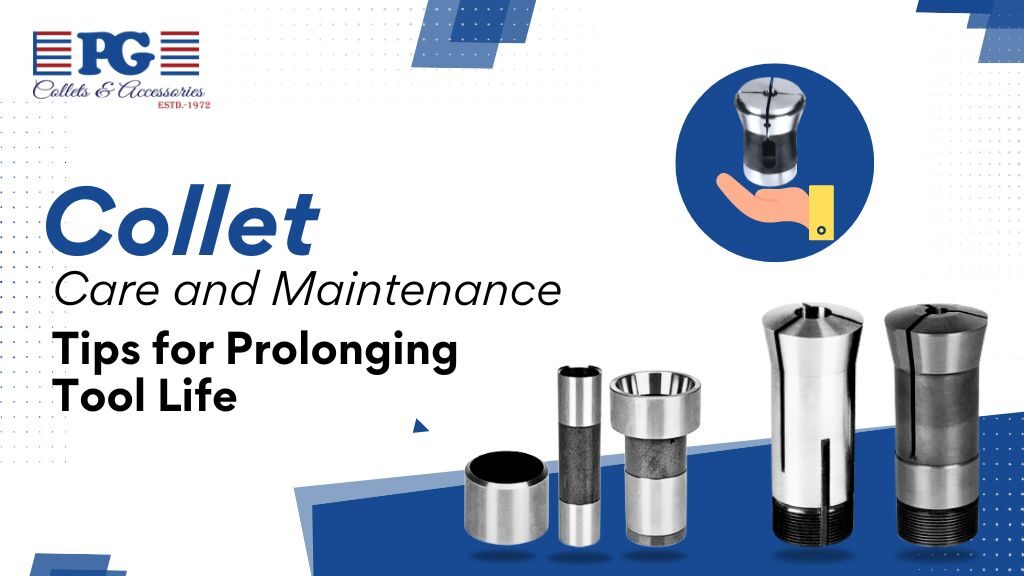PG Collets - Quality Collets Manufacturers and Exporters in India and Abroad

Are you looking to extend the lifespan of your collets and optimize their performance? Dive into our comprehensive guide on Collet Care and Maintenance, where we unveil essential tips and techniques to keep your tools in top-notch condition. From understanding common causes of wear to selecting the right collet for your specific needs, this article is your go-to resource for maximizing tool life and efficiency. Let’s embark on a journey towards preserving the longevity of your collets together!
Collet wear and damage can occur due to various factors that may impact the performance and longevity of your tools. One common cause is improper tightening of the collet, which can lead to uneven pressure distribution on the tool shank, causing premature wear.
Another culprit could be using a worn-out or damaged collet itself. Over time, collets can deteriorate from regular use, resulting in reduced gripping strength and increased runout – both detrimental to your machining operations.
Contaminants like dirt, coolant residue, or metal chips getting lodged in the collet pockets are also known culprits for causing wear and damage. These foreign particles can affect the accuracy of tool positioning and clamping force.
Additionally, using incorrect cutting parameters or running tools at excessive speeds can put unnecessary strain on both the collet and tooling components. It’s essential to always follow manufacturer recommendations for optimal performance and tool life.
Proper cleaning and storage techniques are essential for maintaining the longevity of your collets. After use, make sure to clean them thoroughly using a mild solvent or degreaser to remove any built-up debris or residue. Avoid harsh chemicals that could potentially damage the collet material.
Once cleaned, ensure that the collets are completely dry before storing them. Moisture can lead to corrosion and affect performance over time. Store your collets in a dry and secure location away from direct sunlight or extreme temperatures.
Consider investing in a designated storage case or organizer to keep your collets organized and protected when not in use. This will help prevent unnecessary wear and damage caused by improper handling or exposure to external elements.
By implementing proper cleaning and storage practices, you can prolong the life of your collets and ensure optimal performance for future machining tasks.
When it comes to prolonging the life of your collets, proper lubrication and maintenance play a crucial role.
Make sure to regularly apply a small amount of high-quality lubricant to the collet surfaces before use. This helps reduce friction and wear during operation.
Additionally, after each use, clean the collets thoroughly with a gentle solvent or cleaning solution to remove any debris or buildup that could affect their performance.
It’s also important to inspect the collets regularly for signs of wear or damage. Replace any worn-out parts immediately to prevent further issues down the line.
Store your collets in a dry and secure location when not in use. Proper storage can help prevent rust and corrosion, ultimately extending the lifespan of your tools.
When it comes to choosing the right collet for your application, there are a few key factors to consider. First and foremost, you’ll want to take into account the type of material you will be working with. Different materials may require different collet sizes or configurations for optimal performance.
Additionally, considering the specific requirements of your project is crucial. Are you looking for precision machining or heavy-duty cutting? This will help determine whether a 5C collet chuck or another type of collet would be most suitable for your needs.
It’s also important to think about the compatibility of the collet with your machine tool. Ensuring that the collet is compatible and properly sized for your machine will help prevent issues down the line and optimize performance.
Don’t forget to consult with experts in the field if you’re unsure about which collet would be best suited for your application. Their knowledge and experience can provide valuable insights into making the right choice.
Sometimes, collets can present issues that affect their performance. One common problem is improper seating of the tool in the collet, which can lead to vibrations and poor precision during machining. Ensure that the tool is securely inserted into the collet before tightening it.
Additionally, if you notice excessive runout or wobbling while using a collet, it could indicate wear or damage to either the collet or the tool shank. In such cases, inspect both components for signs of wear and replace any damaged parts promptly.
Another issue that may arise is over-tightening of the collet nut. This can cause deformation of the collet and result in poor gripping strength. Be mindful not to overtighten the nut when securing a tool in place.
If you experience difficulties removing a tool from a collet chuck, avoid using excessive force as this can damage both the tool and the collet. Instead, gently tap on the back of the drawbar to release any tension before attempting removal again.
As we wrap up our discussion on collet care and maintenance, it’s clear that taking proper care of your collets is essential for prolonging their tool life and ensuring optimal performance. By following the tips outlined in this article, such as cleaning and storing them correctly, lubricating them regularly, and selecting the right collet for your specific application, you can prevent unnecessary wear and damage.
Remember to troubleshoot any common collet problems promptly to avoid more significant issues down the line. With a little bit of attention and care, you can keep your collets in top condition and maximize their lifespan.
So next time you’re working with collets, make sure to implement these best practices for maintaining them. Your tools will thank you with longer service life and improved efficiency.